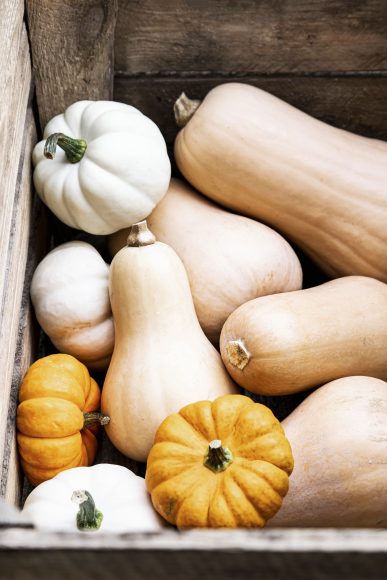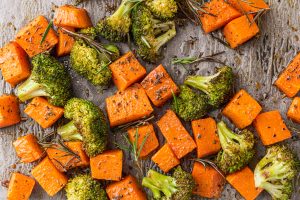Julie Silver, MSW, L.Ac.
Most of us eat foods because they are pleasurable and we enjoy their smell, taste and textures. Eating is a very personal experience as it is both a source of nutrition as well as a tool for social gathering. Most of us are also well aware of the nutritional value of food. Eating whole grains (vs. enriched white flours), fresh (vs. canned) vegetables and healthy fats (vs. trans fats) are cornerstones of many diets. It is also valuable to look at our bodies, the importance of the temperatures and flavors of foods, and the best season to eat them in. By observing the harvesting patterns of fruits and vegetables we can see that nature often dictates these patterns for us. Summertime is a time that we naturally eat lighter. Cooling vegetables such as lettuce, cucumber and sprouts are plentiful. On the hottest days we are inclined to create a cool atmosphere with food and drink. Heavy foods on hot days cause us to be sluggish and tired.
Fall is the season of harvest. It is a time for us to gather, store up and get ready for the stillness of winter. In the fall we switch from eating the raw and light foods of summer to more cooked and warm foods such as salads and steamed vegetables. In the Jewish religion, we eat fall foods during the holiday season. These include tzimmes (made with carrots and sweet potatoes), chicken soup and potato latkes. Winter is the end of all the seasons. Cold and darkness cause us to seek inner warmth. It is time for rest, meditation and to store physical energy. It can be beneficial to add a little body weight during this time. Avoid raw foods during the winter as they tend to be difficult to digest and cool the body. Soups and stews, root vegetables and beans are beneficial foods to eat during the winter months.
In addition to the seasons, Chinese medicine looks at the temperature of foods and their capacity to generate hot or cold in the body. Eating warm foods will make us warm and eating cold foods will make us cold. It is important to understand our own body temperature because the foods we eat act upon the body in different ways. For example, a person with arthritis pain that is worse on cold days should consider consuming more foods with warm qualities. A person prone to sinus conditions or pain that is worse in damp weather should avoid mucous producing foods such as cheese and milk. A person that is hot with symptoms such as skin eruptions in hot weather or hot joint pain should avoid an excess of spicy, hot foods.
There are some general principles you can follow: If you have a cold physical constitution, eat more foods with hot or warm energy and few foods with cold energy. These include brown rice, ginger and cinnamon, pistachio and pumpkin. If you are hot in nature, consider eating more cooling foods such as spinach, barley, tomatoes and soy sauce. If you are dry in nature, consider eating more lubricating foods such as soy, kiwis or pears. If you are damp in nature, avoid dairy products; eat neutral foods such as corn and lentils; and phlegm resolving foods such as kelp and seaweed.
As a rule of thumb, Chinese medicine suggests that most people should eat a diet comprised of cooked (vs. raw) foods. Cooking makes foods more easily digestible and encourages the body to absorb nutrients.



Leave a Reply